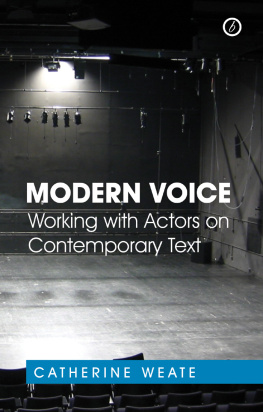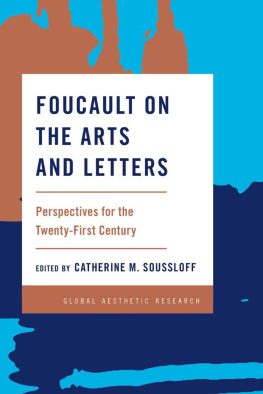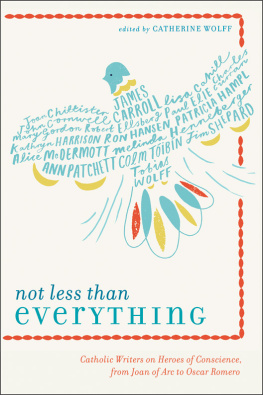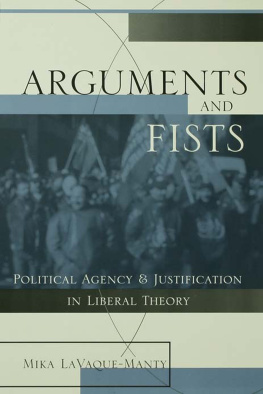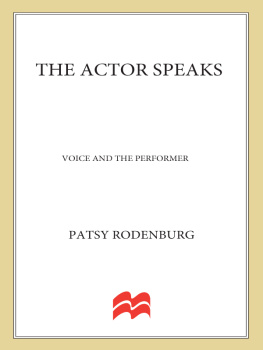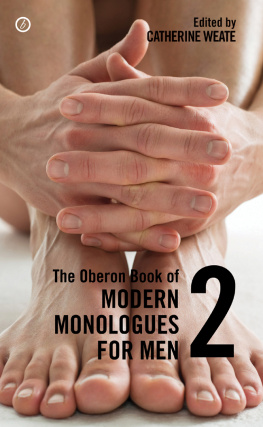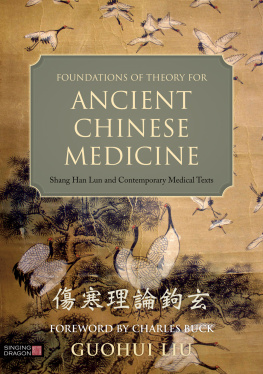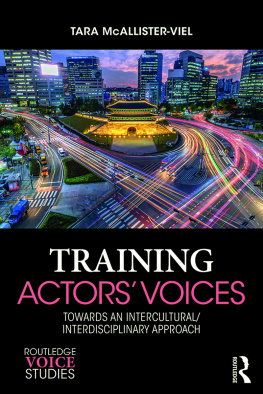My mother was a classroom teacher who believed in the power of the imagination as a teaching tool. She passed away while I was working on this book but the thought of her educational foresight kept me writing. Thanks Mum for teaching me about teaching.
Trying to untangle my specific vocal sources is virtually impossible after so many years of coaching. My solution is to thank everybody I have ever worked with who have provided me with such wonderful inspiration.
Writing a book may appear to be a solo task but there was always someone around the corner for motivation, encouragement and support.
Special mention must be given to Francesco and Max for their loving patience (particularly when I was in silent mode trying to think through an idea: Im sure it was deeply frustrating).
My test readers, Les Cartwright, David Shirley and Mia Ball, offered up invaluable reassurance and advice. Some very lengthy drafts were shaped from their feedback.
And, of course, none of this would have been realised without James Hogan, Charles Glanville and the fantastic team at Oberon Books, particularly Andrew Walby for his incisive editorial eye.
I couldnt have done it alone. Thank you.
PREFACE
Modern Voice: Working with Actors on Contemporary Text has been designed to follow on from Classic Voice: Working with Actors on Vocal Style published in September 2009 by Oberon Books. Classic Voice provides a comprehensive preparation for the vocal demands within classical texts: Modern Voice focuses on the less defined demands of contemporary text.
Most actors think there isnt as much to work on vocally when they approach a contemporary text, particularly if there arent any specific dialect demands. However, lifting written rhythms off the page can be a huge challenge. Sometimes these rhythms are realistic, resembling or mirroring the speech patterns of real human beings: sometimes they are non-realistic, distorting speech patterns for particular effect. Modern Voice provides directors, lecturers, teachers, trainers and coaches with a myriad of ideas to explore these demands in rehearsal.
Part One (Chapters 1 and 2) unpacks contemporary vocal realism. Chapter 1: Rhythm in Speech focuses on the rhythmic features that create spontaneous speech. What are the characteristics of a real voice? And, what makes speech believable?
Chapter 2: Rhythm in Writing focuses on the rhythmic features in contemporary writing and how they can be brought to life for an audience. There are practical exercises and activities at the end of the chapter that can be implemented as part of a workshop/rehearsal plan. Prose is used as sample text so that the rhythmic values of written text can be explored without the over-complication of character dialogue or direct speech. Some of the exercises are technical, artificial and a little unfashionable: they ask actors to think about specific rhythmic elements whilst they are reading aloud, rather than just concentrating on communicating meaning and emotion. However, the pay-offs are considerable. By completing work like this prior to working (more organically) on dramatic text, an actors voice can become rhythmically focused and precise.
Chapters 1 and 2 are the backbone of Modern Voice, providing important information for the dramatic processes that follow. You may be tempted to skip them so that you can get to the heart (and point) of the book but Chapters 3 through to 11 have been designed with the assumption that you already know about the technical nuts and bolts of the work from these initial pages.
Part Two (Chapters 3, 4, 5, 6 and 7) introduces dramatic text that contains realistic content and relies on true-to-life speech rhythms to communicate that content. Defining realism isnt easy and there is a great deal of confusion and disagreement in the academic world about it. Chapter 3: Journeys, Demands and Challenges characterises realistic text through its socio-political context and focuses on its rise in selected parts of the English-speaking world (specifically the late nineteenth century to the mid-1960s). Information about the vocal demands and challenges that actors face when working on realism is then considered from within these cultural frameworks.
Chapter 4: Creating Character, Chapter 5: Dealing with Dialogue/ Revealing Relationships, Chapter 6: Capturing the Colloquial and Chapter 7: Voicing the Verbatim provide practical processes for working on realistic drama. Each chapter includes an overview of the vocal/verbal demands, samples of text and a workshop plan. Although verbatim texts can be non-realistic in presentation, the speech rhythms are naturalistic, having been edited from real-life interviews, first-hand testimonies and documented public inquiries.
Part Three (Chapters 8, 9, 10 and 11) deals with non-realistic drama: meaning text that stretches the boundaries of realism in plot, time, character, presentation, rhythm and/or language. Chapter 8 unpacks the nature, demands and challenges of such texts and provides information on some of the major non-realistic theatrical movements throughout the twentieth century. Chapter 9 focuses on text that, at times, feels realistic but treats word and rhythm non-realistically, such as works written by Harold Pinter and Howard Barker. Chapter 10 discusses the vocal demands of absurdist drama, using the texts of Samuel Beckett and Eugene Ionesco as working examples. Finally, Chapter 11 takes a look at contemporary verse plays, such as those written by Sarah Kane and Glyn Maxwell, which brings us back (full circle) to some of the processes required when working on classical verse plays, like those outlined in Classic Voice. These last three chapters provide information on the vocal/verbal demands of the text samples and workshop plans for practical experimentation.
Like Classic Voice, the term actor is used throughout but encompasses students from secondary schools, performing arts courses, universities and drama schools, as well as the amateur performer, the untrained professional and the trained professional. The exploratory exercises and activities listed in

